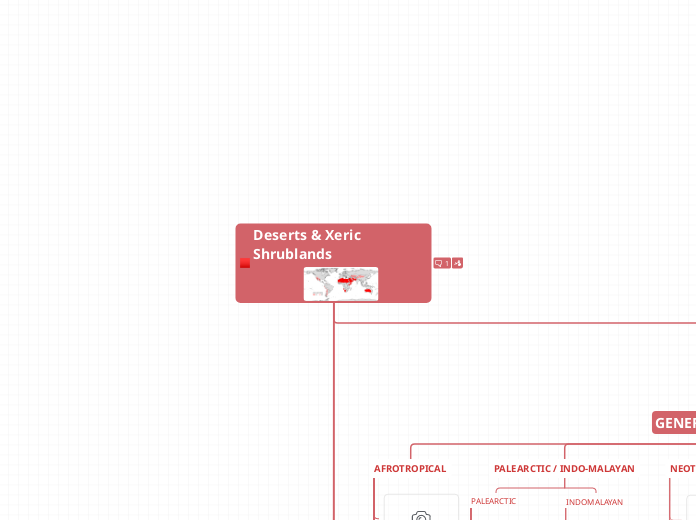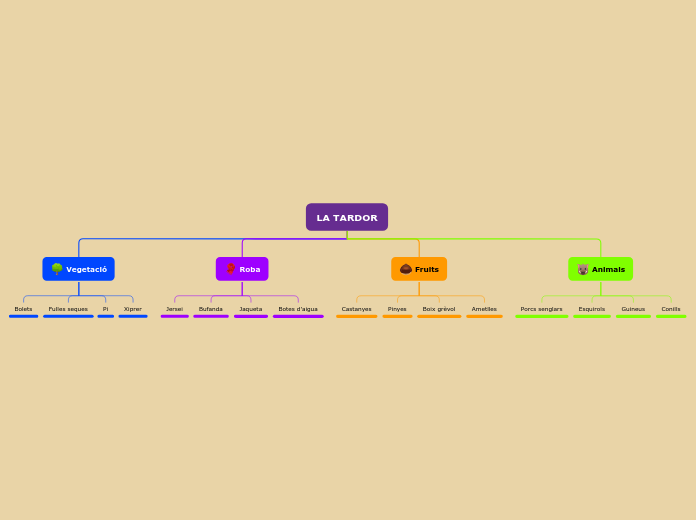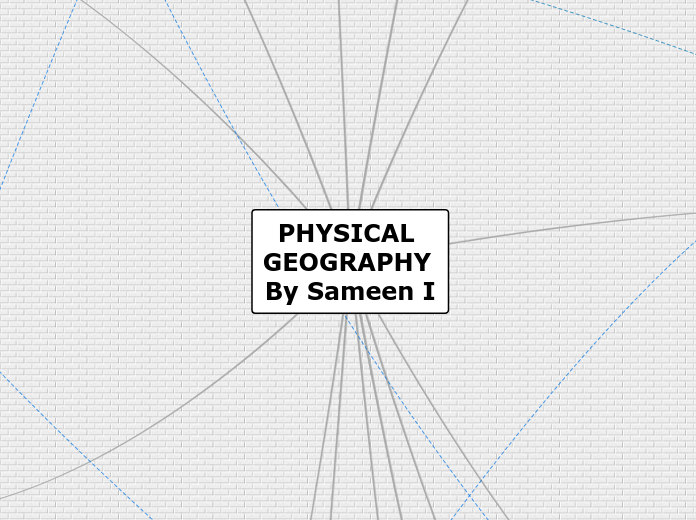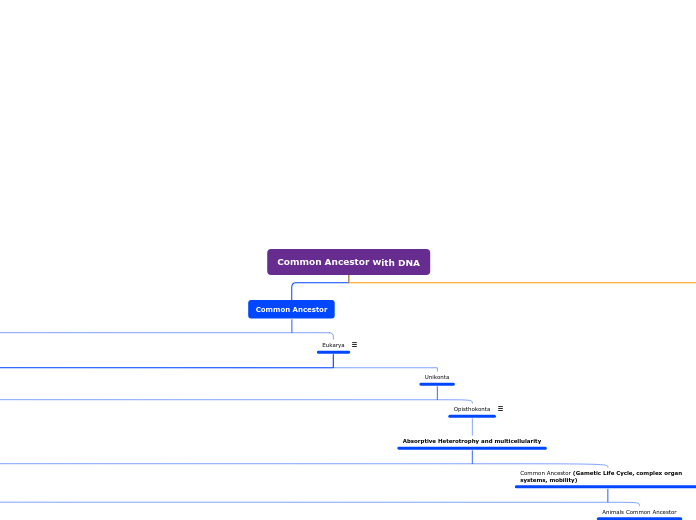Deserts & Xeric Shrublands
Arabian
Arabian Peninsula
Covered almost entirely by sand; has some of the most extensive stretches of sand dunes in the world. Plants: acacia, oleander, saltbush.
Australian (Great Sandy, Victoria, Simpson, Gibson, and Sturt)
Australia
Great Sandy, Victoria, and Simpson are sandy; Gibson and Sturt are stony. Plants: acacia, casuarina tree, eucalyptus, saltbush, spinifex grass.
Chihuahuan
North Central Mexico and Southwestern United States (Arizona, New Mexico, Texas)
High plateau covered by stony areas and sandy soil. Many mountains and mesas. Plants: cacti, chihuahuan flax, creosote bush, lechuguilla, mesquite, mexican gold poppy.
Kalahari
Southwestern Africa
Covered by sand dunes and gravel plains. Plants: acacia, aloe.
Mojave
Southwestern United States (Arizona, California, Nevada)
Covered by sandy soil, gravelly pavement, and salt flats. Plants: creosote bush, desert sand verbena, joshua tree, mesquite.
Monte
Argentina
Covered by sand and soil. Plants: cardon cactus, creosote bush, paloverde.
Sahara
Northern Africa
Covered by mountains, rocky areas, gravel plains, salt flats, huge areas of dunes. Areas in the central sometimes get no rain for years at a time. Plants: acacia, grasses, tamarisks.
Sonoran
Southwestern United States (Arizona, California) and parts of Mexico (Baja Peninsula, Sonora).
Covered by sand, soil, and gravelly pavement. Gets more rain than any other North American desert. Plants: agave, coulter's globemallow, creosote bush, desert mariposa lily, mesquite, ocotillo, paloverde, saguaro.
Thar
India and Pakistan
Majority of desert covered by sand dunes; rest covered by gravel plains. Plants: acacia, euphorbias, grasses, shrubs.
ECOREGIONS
Tehuacán Valley matorral
Sechura desert
San Lucan xeric scrub
Paraguaná xeric scrub
Motagua Valley thornscrub
Malpelo Island xeric scrub
La Costa xeric shrublands
Guajira-Barranquilla xeric scrub
Galápagos Islands xeric scrub
Cuban cactus scrub
Caribbean shrublands
Atacama desert
West Saharan montane xeric woodlands
West Sahara desert
Tibesti-Jebel Uweinat montane xeric woodlands
Taklimakan desert
South Sahara desert
South Iran Nubo-Sindian desert and semi-desert
South Arabian plains and plateau desert
Saharan Atlantic coastal desert
Registan-North Pakistan sandy desert
Red Sea coastal desert
Red Sea-Arabian Desert shrublands
Qaidam Basin semi-desert
Paropamisus xeric woodlands
North Saharan Xeric Steppe and Woodland
North Arabian highland shrublands
North Arabian desert
Mesopotamian shrub desert
Kopet Dag semi-desert
Kazakh semi-desert
Junggar Basin semi-desert
Great Lakes Basin desert steppe
Gobi Lakes Valley desert steppe
Eastern Gobi desert steppe
East Sahara Desert
East Saharan montane xeric woodlands
East Arabian fog shrublands and sand desert
part of Oman
Central Persian desert basins
Central Asian southern desert
Central Asian riparian woodlands
Central Asian northern desert
Central Afghan Mountains xeric woodlands
Caspian lowland desert
Baluchistan xeric woodlands
Badghyz and Karabil semi-desert
Azerbaijan shrub desert and steppe
Arabian desert
Arabian stone/mixed desert
Arabian sand desert
Arabian-Persian Gulf coastal plain desert
Afghan Mountains semi-desert
Alashan Plateau semi-desert
Wyoming Basin shrub steppe
Tamaulipan matorral
Tamaulipan mezquital
Sonoran desert
Snake-Columbia shrub steppe
Mojave desert
Meseta Central matorral
Gulf of California xeric scrub
Great Basin shrub steppe
Colorado Plateau shrublands
Chihuahuan desert
Central Mexican matorral
Baja California desert
Araya and Paria xeric scrub
INDO-MALAYAN
Thar desert
Deccan thorn scrub forests
Aravalli west thorn scrub forests
St. Peter and St. Paul Rocks
Southwest Arabian highland xeric scrub
Southwest Arabian Escarpment shrublands and woodlands
Southwest Arabian coastal xeric shrublands
Somali montane xeric woodlands
Socotra Island xeric shrublands
Namibian savanna woodlands
Namib Desert
Namaqualand-Richtersveld steppe
Karoo
Succulent Karoo xeric shrublands
Nama Karoo shrublands
Gariep Karoo
Madagascar succulent woodlands
Madagascar spiny thickets
Kaokoveld desert
Kalahari xeric savanna
Ile Europa and Bassas da India xeric scrub
Hobyo grasslands and shrublands
Eritrean coastal desert
Djibouti xeric shrublands
Aldabra Island xeric scrub
Aldabra is the world's largest raised coral atoll
Western Australian Mulga shrublands
m
Tirari-Sturt stony desert
Pilbara shrublands
Nullarbor Plains xeric shrublands
Great Victoria desert
Simpson desert
Great Sandy-Tanami desert
Tanami Desert
Carnarvon xeric shrublands
Central Ranges xeric scrub
Gibson desert
ESSENTIAL
ECOREGIONS ESSENTIAL
SAHARA
http://atlas-sahara.org/index.html
http://atlas-sahara.org/flore/_flore/_flore.html?cat=index
SOUTH SAHARA DESERT
WEST SAHARAN MONTANE XERIC WOODLANDS
WEST SAHARA DESERT
NORTH SAHARAN XERRIC STEPPE AND WOODLAND
NORTH SAHARAN XERIC STEPPE AND WOODLAND
EAST SAHARA DESERT
PAKISTAN
SOUTH IRAN NUBO-SINDIAN DESERT AND SEMI-DESERT
to check:
Hingol National Park
SMAL PLANTS
Cleome amblyocarpa
Heliotropium
Cornulaca arabica
Neurada
Anastatica
Stipagrostis
Lasiurus scindicus
Panicum turgidum
Scirpus
Rhanterium
Zilla
Tetraena
Suaeda
Salsola
Seetzenia africana
Cassia italica
Suaeda aegyptiaca
Hammada salicornica
Acacia pachyceras
Ziziphus nummularia
Haloxylon
Avicennia marina
REGISTAN-NORTH PAKISTAN SANDY DESERT
to check
- https://postconflict.unep.ch/publications/afg_tech/theme_02/afg_biodiv.pdf
- https://www.cbd.int/doc/world/af/af-nbsap-01-en.pdf
- Hingol National Park
the eco-region covers the large semi-desert region of southern afghanistan including the registan Desert and the Siestan Basin. it combines all of Freitag’s (1971, 1972) semi-desert communities in the south-western part of the country. this includes the Haloxylon salicrnicum Semi-de-sert, calliginum-artistida Semi-Desert, chenopodiumrich and amygdalus Semi-Desert communities. Dasht-e-nawar Flamingo and waterfowl Sanctuary is not legally protected by the afghan government and the insecurity that charac-terizes the area limits the realization of practical conserva-tion measures
Indus Valley desert
BALUCHISTAN XERIC WOODLANDS
67% of the territory is bare or sparse vegetation. %9 is shrubland, 8% is herbaceous vegetation, and 9% is cultivated cropland.
Below 1,500 meters, the vegetation is steppe in character. From 1,500 to 2,000 meters is found montane open forest of Pistachio trees (Pistacia atlantica), Wild almond (of genus Prunus), and Barberry (Berberis). Lower brush includes Honeysuckle bush (of genus Lonicera), Sage (Artemisia (genus) spp.), and Pashtun juniper (Juniperus macropoda). At higher altitudes there is a transition zone of Sclerophyll trees (woody brush with hard leaves). At still higher elevations are the isolated alpine meadows of other ecoregions.
Allium
Tulpa
Iris
communities:
perennial grasses
tropical shrubs
Leguminosae
Rhamnaceae
Tamaricaceae
Bromus
Poa Anua
Saccharum spontaneum
Tamarix
Gramineae
Dodonaea viscosa
Lycium,Solanaceae
Sage
Artemisia maritima
Artemisia genus
Honeysuckle Busch
Salvadora
Salvadora oleoides
Acacia
Acacia modesta
Acacia arabica
Olea
Olea cuspidata
Juniper
Pashtun juniper
Juniperus macropoda
Juniperus semiglobosa
Barberry (Berberis)
Wild Almond
Pistacia Atlantica
SOIL
uneven limestone
filled with lacustrine clays, gravel, or boulder
pedocals
gypsum
THAR DESERT
- https://www.sahapedia.org/the-plants-of-the-thar-desert
- https://www.sahapedia.org/the-vegetation-of-the-thar-desert-geography-history-culture-and-conservation !!!
OTHER PLANTS
Suaeda fruticosa
FLOWERS / HERBS
Bekario/ Heartleaf indigo
The Thar’s desert sands overlie Archean (early Precambrian) gneiss (metamorphic rocks formed between 4 billion and 2.5 billion years ago), Proterozoic (later Precambrian) sedimentary rocks (formed about 2.5 billion to 541 million years ago), and more-recent alluvium (material deposited by rivers). The surface consists of aeolian (wind-deposited) sand that has accumulated over the past 1.8 million years.
The soils consist of several main groups—desert soils, red desertic soils, sierozems (brownish gray soils), the red and yellow soils of the foothills, the saline soils of the depressions, and the lithosols (shallow weathered soils) and regosols (soft loose soils) found in the hills. All those soils are predominantly coarse-textured, well-drained, and calcareous (calcium-bearing). A thick accumulation of lime often occurs at varying depths. The soils are generally infertile and, because of severe wind erosion, are overblown with sand.
Sand dunes
e.g.
Lal Suhanra National Park
Eolian sand
BIOME ESSENTIAL
COMPONENTS
River Red Gum (Eucalyptus camaldulensis)
Blue Bush (Maireana sp.)
Prickly Wattle (Acacia victoriae)
Dead Finish (Acacia tetragonophylla)
Copperburrs (Sclerolaena sp.)
Saltbush (Atriplex sp.)
SHURBS
GROUND
http://www.basinandrangewatch.org/DesertPavement.html
FLOWERS
LICHES
MOSSES
FLOWERS, HERBS, PLANTS
Ceratolimon feei
Battandiera amoena
Citrullus colocynthis
Cistanche tubulosa
Cistanche tubulosa is a holoparasitic desert plant species in the genus Cistanche.
GRASS
SHRUBS
TREES
Phoenix dactylifera
Date palm
Pistacia
Salvadora persica
Salvadora persica (arak, jhak, pīlu, Salvadora indica, toothbrush tree, mustard tree)
Ziziphus jujuba
Ziziphus jujuba, commonly called jujube, red date, Chinese date, is a species in the genus of Ziziphus (some of whose other species are also sometimes referred to as jujube), in the buckthorn family
Calotropis procera
Calotropis procera - Common names for the plant include Apple of Sodom, Sodom apple, stabragh[citation needed], king's crown, rubber bush and rubber tree
Tamarix aphylla
Tamarix aphylla - The species has a variety of common names, including Athel tamarisk, Athel tree, and Athel pine
Vachellia nilotica
Vachellia nilotica (commonly known as gum arabic tree,
babul, thorn mimosa, Egyptian acacia or thorny acacia)
Vachellia jacquemontii
Prosopis cineraria
Prosopis cineraria, also known as ‘Ghaf, It is also the state tree of
Rajasthan (where it is known as Khejri), Western Uttar Pradesh (where it is known as Chhonkara) and Telangana (where it is known as Jammi) in India, Shami, Khijro, Janti and Jand.
khajri tree
TERRAINS
The principal topographical features of the Sahara include shallow, seasonally inundated basins (chotts and dayas) and large oasis depressions; extensive gravel-covered plains (serirs or regs); rock-strewn plateaus (hammadas); abrupt mountains; and sand sheets, dunes, and sand seas (ergs).
Dunes mobiles
Fezna (gps: 31.5255, -4.5122)
Sandy plain
Gorges
Mountain slopes
Jdayed (gps: 30.8462, -4.1713 - altitude: 700/900m)
Guelta | Amda
Hamada | Gara
Erg | Dunes
Erg: desert of fixed dunes of which only the superficial sand is constantly reshaped by the wind.
Sidi-Ali (gps: 30.7913, -4.7919)
xxx
Sebkha, chott | Salt lake
Sebkha: floodable depression whose bottom is covered with a salt crust where no vegetation grows.
Chott: edge of the sebkha, covered with vegetation of salt tolerant plants.
Sebkhas and chotts are found south of the Tafilalet, in the flood bed of the Ziz wadi. Where the water only passes and deposits silt, we have maader; but where water accumulates, stagnates and then evaporates and deposits dissolved mineral salts, there are sebkhas and chotts.
Chaaba | Takat | Ravine
n mountainous areas, ravines collect runoff water during brief and violent floods. The bed of the wadi is most often made up of large boulders and devoid of vegetation. Trees and bushes preferentially grow at the limit between the bed of the wadi and the foot of the scree. The slopes of the ravines - like the krebs - offer a wide variety of exposures and micro-environments favorable to a sparse but varied flora.
Daya | Doline
Dayet, pl. daya: circular basin that collects rainwater on the regs or on the hamadas, when the slope is too low for drainage lines to be created.
Dayas vary greatly in size: from a few meters to a few hundred meters in diameter. After rains, their loamy soil can retain moisture for weeks to months.
Subtopic
Mengoub
LANDFORM
https://www.vincentmounier.com/album/aerial/
GENERAL LOOK
some planing
AUSTRALASIA
NEARCTIC
NEOTROPICAL
PALEARCTIC / INDO-MALAYAN
INDOMALAYAN
PALEARCTIC
AFROTROPICAL









